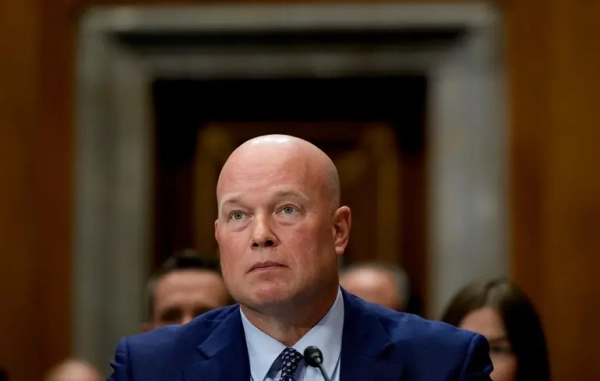For these families, the last few years’ economic tumult has been particularly pronounced.

President Joe Biden arrives to speak about his Bidenomics agenda at Tioga Marine Terminal in Philadelphia, Pennsylvania. Andrew Caballero-Reynolds / AFP via Getty Images Christian Paz is a senior politics reporter at Vox, where he covers the Democratic Party. He joined Vox in 2022 after reporting on national and international politics for the Atlantic’s politics, global, and ideas teams, including the role of Latino voters in the 2020 election.
Of all the difficult questions Democrats face ahead of 2024, two storylines are particularly confounding. The first is the economy: Most Americans are still pretty pissed about its state, even though economists can point to plenty of positive indicators. And the second is in the polling: Joe Biden continues to underperform among Black and Latino Americans, who are a significant part of the Democratic base.
Those two features are likely connected. And understanding that connection might offer some greater insights into why today’s vibes remain so lousy.
Those vibes are independent of whether the economy is “good” or “bad” in any objective sense. That’s a political hornet’s nest, particularly when Biden’s economic record will be front and center in 2024 — and it will likely matter less than how voters are feeling when they go to the polls. Some pundits argue that the sour feelings about the economy are a reflection of real-world conditions and lived experience, while others argue that it’s a perception issue, and that the economy is objectively lifting Americans’ fortunes.
But not all Americans live under the same economic conditions, and two recent reports shed light on the different economic experiences of Black and Latino Americans.
The news is, in short, a mixed bag. One study found that during the height of the Covid-19 pandemic, years that included the end of Trump’s term and the beginning of Biden’s, Black and Latino households made gains in accumulating wealth. But in the years that followed, those gains slowed significantly or even reversed.
Part of that slide was due to inflation, the main economic villain of the Biden years. Another 2023 study found that Black and Latino households suffered more from inflation than their white counterparts, as the higher costs of transportation and food took bigger bites out of their paychecks. But it’s not all bad news: There’s evidence that real wages — the value of workers’ pay when inflation is taken into account — grew for Black and Latino workers in recent years, and even that it grew faster for them than for workers overall.
Still, those silver linings do not seem like they’re putting Black and Latino voters in a good mood about the nation’s economic environment. In the New York Times’s surveys of battleground states, Black voters, a loyal Democratic constituency, view the economy as negatively as white voters. And Latino voters viewed the economy more negatively than white voters in these states.
It’s worth breaking down these studies for answers on why that might be so.
The early pandemic years saw Black and Latino families make economic gains
Despite the initial shock of mass unemployment and fears about just how much lasting damage the Covid-19 pandemic would do to people of color in the US, it turns out that the worst of the pandemic years saw significant financial benefits for low-income and working-class Black and Latino families.
The clearest positive sign was an increase in wealth. The typical US household saw its wealth increase by about 37 percent from 2019 to 2022, even after adjusting for inflation, according to analysis from the Federal Reserve’s Board of Governors. Those are overall numbers, but a recent report from the Pew Research Center suggests that those gains in wealth were shared by the lowest-income Black and Latino households. (By “wealth,” Pew means net worth — or the sum of all the investments, property, and savings a family has, with debt subtracted from that figure.)
That greater wealth was born of a combination of factors. The job market recovered quickly after the economy began to open up, and competition for workers led to better wages for employees, who either got raises at their workplace or moved to better-paying jobs. Stocks and investments delivered better returns, while home values rose quickly. Families built up their savings during the pandemic, while the federal government gave out huge amounts of assistance. That help, which came in the form of direct stimulus payments, tax credits, or small business aid, was especially impactful for lower- and middle-income families.
The fact that low-income and working-class Black and Latino Americans saw their wealth increase during these years did not, by any stretch of the imagination, vault them into the upper class. The median low-income Black household, for example, was able to cut debt by about $6,000 — an improvement, but one that left them still in debt and with a negative net worth. The median low-income Latino household, meanwhile, was able to cut debt by about $1,000 and get itself out of debt. But even that growth meant achieving a net worth of zero.
And despite Black and Latino households gaining wealth during these years, the massive gap in actual wealth between Black and Hispanic families and white families actually grew. In 2019, the typical white household had $168,800 more in wealth than the typical Latino family, according to Pew. By 2021, that gap had grown by nearly $33,000.
Even among Black and Latino households only, those pandemic gains were still uneven. Richer Black and Latino families still did better than poorer ones. And despite increases in wealth across both richer and poorer families, richer households still held the overwhelming majority of wealth going into 2022. This uneven recovery meant that those who were already better off benefitted more in absolute terms.
But despite being uneven, the pandemic-era gains were still improvements. They were meaningful in getting families through a crisis and helping them improve their finances, even if for a brief moment. The next two years would bring more challenges, including some that would make many families, including Black and Latino households, feel like they were taking a step back.
Inflation picked up quickly starting in the second half of 2021, and many of the factors that contributed to the pandemic-era wealth boost either changed direction or became less favorable for all families. And incomes fell. As Pew’s report notes, after rising during the peak of the pandemic, the pre-tax income of US households then fell by 2.3 percent. After-tax income fell even more (8.8 percent), likely because federal stimulus payments stopped and tax breaks like the expanded child tax credit ended.
Meanwhile, spending remained high as pandemic-era savings were used to offset inflation and address pent-up demand — which also slowly drained some of the wealth that had been accumulated, including by lower-income Black and Latino households, Pew notes. Home values, which had been increasing quickly in 2021, slowed down in 2022. And mortgage rates doubled as the Federal Reserve began responding to inflation.
Inflation became a huge problem in 2021, especially for Black and Latino families
When talking about economic concerns, Black and Latino survey respondents in recent years are usually talking about inflation. And there’s good reason for this: Not everyone was affected by inflation in the same way. Inflation inequality — what the Federal Reserve Bank of New York calls the uneven rates of inflation experienced by different subgroups of Americans — got worse for Black and Latino families over the last two years.
New York Fed analysts did a deep dive into this question earlier this year, looking at the subcategories of spending that may have put greater strain on the personal finances of Asian American, Black, Latino, and white families. Using data from the Bureau of Labor Statistics — specifically, CPI numbers (which track inflation) and the Consumer Expenditure Survey (which tracks how subgroups spend their money) — the analysts found a stark difference in how inflation played out throughout 2021 and 2022.
Black and Latino Americans experienced “steadily higher price increases relative to the overall average between early 2021 and June 2022,” largely because of the way prices increased for transportation (specifically the price of cars and gasoline) and food. A few things explain this: larger families than white or Asian American households, different jobs that require different modes of transportation, and the kind of urban communities in which they live. But the evidence the analysts found is convincing: Black and Hispanic families spent a bigger portion of their paycheck on these more costly things than Asian American and white families did.
Those disparities were biggest for Latinos when it came to spending on food, used cars, and gasoline, the New York Fed analysts found. And compared to white families, both Black and Latino families spent a bigger share of their paychecks on housing as well.
As overall inflation rates have declined, these gaps have also shrunk, according to the New York Fed’s report. But they’re not entirely gone. And if you look at how inflation rates vary depending on income, you also see another disparity: For most of 2021 and 2022, it was middle-income families that felt the biggest crunch from inflation. But about halfway through 2022 and into 2023, the burden of inflation got worse for low-income families — which disproportionately tend to be Black and Latino households.
Into 2023, according to the New York Fed’s latest update, those gaps still exist despite improvements. But Black and Latino families have also experienced another positive change in the last few years. Real wages, or the amount of money workers make after taking into account inflation, have steadily increased for Black and Latino workers since the pandemic’s onset, a November working paper from the National Bureau of Economic Research (NBER) confirmed. Despite some volatility throughout the last couple of years, Black and Latino workers are making more money than they did before the pandemic. This matches another trend these NBER authors found earlier in the year: Real wages for the least-well-off workers, who disproportionately tend to be Black or Latino, have also been improving in the last two years. This is one reason why inflation isn’t a full picture of economic well-being. If wages (and other sources of income) remain higher than inflation, then households can still be better off — even if they’re paying higher sticker prices.
That doesn’t mean, however, that people feel better off.
In the New York Times poll, only 19 percent of Black voters and 14 percent of Latino voters had a generally positive view of the economy. (Twenty percent of white voters had a positive view.) Meanwhile, 48 percent of Black voters and 50 percent of Latino voters rated the economy as “poor.”
While Black and Latino households have faced particular headwinds in recent years, and reaped fewer benefits from pandemic-era stimulus relative to already better-off white households, they’re not alone in feeling disgruntled: 52 percent of white voters rated the economy as “poor” in the same New York Times poll, more than either Black or Latino voters.
For the Democratic Party, however, the frustrations of voters of color should be sounding some particularly loud alarms with the 2024 election on the horizon. For one, there’s a partisan gap in how voters feel about the economy, and white voters make up a far larger share of the Republican electorate. And second, a turnout problem among voters of color, fueled by flagging economic satisfaction, would be a much bigger deal for Democratic candidates — including Joe Biden.
In other words, Democrats have a long way to go if they’re going to convince Black and Latino voters that today’s economy is anything to celebrate. And with election year approaching, they have relatively little time to do it.
Sourse: vox.com






